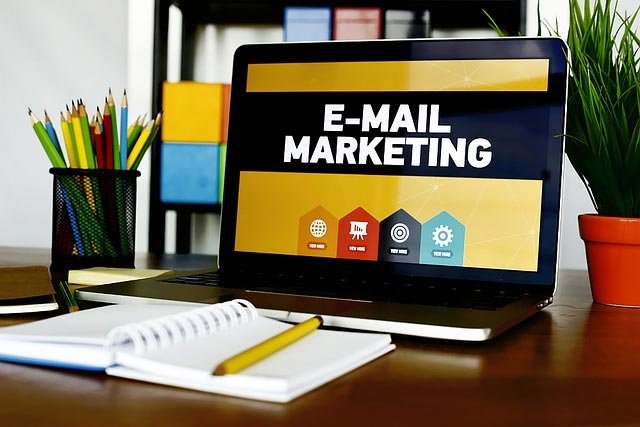Utilizing digital marketing for small business is the most effective and budget-friendly approach to generating demand for your product or service, especially considering the stress that being an entrepreneur can bring.
However, many small businesses lack the time, resources, and expertise to execute a digital marketing strategy.
1. Invest in a Website

A small business without a website misses out on an entire market segment. With COVID-19 driving even more people into the digital realm, a website is more important than ever for small businesses that want to compete.
Many small business owners think they can rely on social media to reach potential customers, but that’s not always true. Keeping up with social media, addressing comments and messages, and providing strong customer support can take longer than expected.
While having an active social media profile is a good idea, your website should be the focal point of your digital marketing efforts. Your website is where you can provide all of this information, showcase reviews and testimonials, and display any awards or achievements your company may have. This is an incredibly effective way to help potential customers feel confident in your products and services.
With a website, you can also include forms where customers can sign up for your email list or newsletter. You can then use this database to send targeted emails and offers that can help you generate more sales. In addition, you can add a chatbot to your website so that customers can get the help they need from a live person while remaining on your website.
A website builds trust, boosts your brand, and sets you apart. It’s cost-effective compared to traditional ads and can lead to customer sales. Unlike social media pages, you have stable control over them.
2. Optimize Your Website for Search Engines

Many small businesses may feel overwhelmed with the sheer amount of digital marketing that is out there. They may believe they don’t have the resources or time to do all of it. However, they should know the benefits of a strong digital marketing strategy.
One of the most important aspects of digital marketing is optimizing your website for search engines. This includes having relevant keywords in your content and using them effectively. It also includes having a site that is mobile-friendly. This is crucial because most searches are performed on smartphones and tablets. A mobile-friendly website can help increase the number of visitors your business receives.
They typically enter keywords into a search engine when looking for something online. This allows them to find the information they need and can help them connect with businesses offering the products or services they need. Digital marketing involves trying different strategies and analyzing the results to see what is working and what is not. This helps ensure you get the most out of your marketing budget.
There are a lot of things that can be done to optimize your website for search engines. Still, some of the most important ones include having keyword-rich titles and descriptions, having unique URLs for each piece of content, having correct structured data, and having good website speed.
These factors can help improve your website’s search engine rankings, increasing traffic and enhancing your online visibility. Implementing effective digital marketing packages for small businesses can increase conversions, leads, and sales. For instance, a flower shop that adopted a solid digital marketing strategy saw remarkable results – experiencing a 20 percent increase in total transactions, a 50 percent increase in individual purchases, and a 46 percent increase in revenue. This success story clearly illustrates the effectiveness of digital marketing packages for small businesses as a powerful tool for growth and success.
3. Create a Social Media Presence

There’s no question that a social media presence is essential for small businesses. However, not all of us have the time to manage our content. Luckily, there are tools available to help.
A social media management tool like WriterAccess can make it easy for small businesses to find talented freelance writers who can create and schedule posts on their behalf. This allows small business owners to focus on other aspects of their business while maintaining a strong online presence.
Creating a social media profile is only the beginning. Creating content relevant to your audience that resonates with them is important. This will build trust and bring you closer to earning their business.
Besides boosting brand awareness, social media aids in customer service, engagement, lead generation, and sales. Utilize these platforms for real-time interactions and valuable communication, whether addressing concerns or promoting offers.
It can be hard to measure the success of your social media marketing. Your boss might be interested in how many likes your post gets, but you should also pay attention to metrics like website traffic and engagement rates.
A chatbot can take your social media presence to a whole new level. For example, Nellie Mae Boutique’s Facebook page features a chatbot that allows members to ask questions and place orders. This allows customers to interact with the brand naturally and personally. It can even be used to drive traffic to your website, which can ultimately lead to more sales.
4. Utilize Email Marketing

Any small business that wants to thrive requires a healthy dose of digital marketing strategies. Unlike traditional local advertising methods like newspaper ads or radio announcements, online marketing efforts can reach your business’s target audience worldwide.
One of the most important forms of digital marketing is email. This form of marketing involves sending out emails to your customers, subscribers, and potential customers, usually through newsletters or other informative messaging. Email marketing is a great way to build trust and rapport with your current and future customers and can help you generate more sales.
Regarding email marketing, you must keep your emails relevant to your business’s offerings. Sending out promotional emails unrelated to your business can cause your audience to unsubscribe from your list or stop engaging with your brand altogether. In addition, be sure to include your social media links in your email messages so that your subscribers can easily engage with your content and share it with their audiences.
Email marketing drives traffic and sales to your site. Adding clickable call-to-action buttons can boost visitor numbers and potentially increase sales. Email marketing also offers the advantage of owning your follower list—a unique feature compared to most other digital platforms. Unlike, say, a Facebook page shutdown, where you lose your cultivated audience, your email list remains intact. In the digital realm, email marketing is essential for small business aiming to thrive and expand.
5. Create a Marketing Funnel
Using a marketing funnel to help guide prospective customers toward becoming paying clients is an essential small business digital marketing strategy. The marketing funnel has three segments: the top, middle, and bottom of the sales funnel (or high, middle, and low). By monitoring your leads at each stage, you can optimize your marketing strategies and convert more prospective customers into paying clients.
At the top of the funnel, people recognize a problem or need. This can trigger a search for information or solutions, and this is where your content can capture attention. For example, a person who wants to build a backyard pool may search online, read customer reviews, or visit showrooms in their area.
In the middle of the funnel, prospective buyers narrow their choices and seriously consider your product a solution. This is where you must provide them with compelling content highlighting your products’ unique selling points and benefits. For example, you could offer a free demo, a bundle of items, or a discount for buying multiple products from your company.
Once potential customers reach the action stage, focus on sealing the deal. Test various offers to optimize customer response. For instance, free shipping might outperform discount codes for new buyers. Implement successful offers in email campaigns and content for better conversions. Track lead sources to enhance effective channels. Amplify traffic to top-performing content, add calls to action, and replicate successful guest post opportunities.





